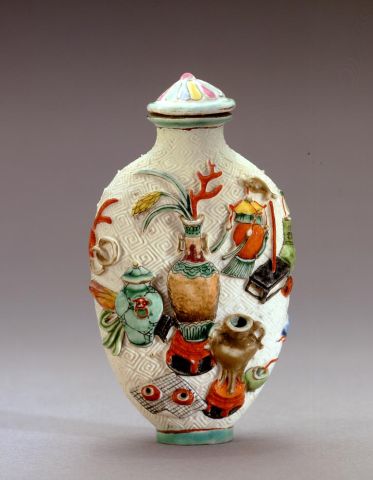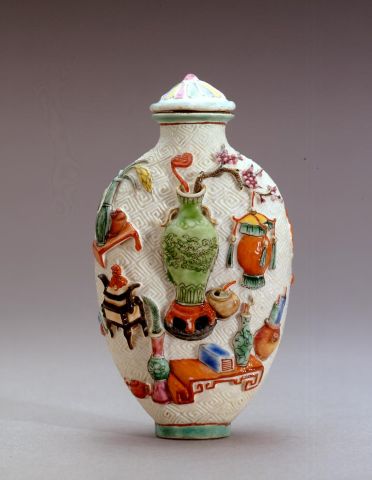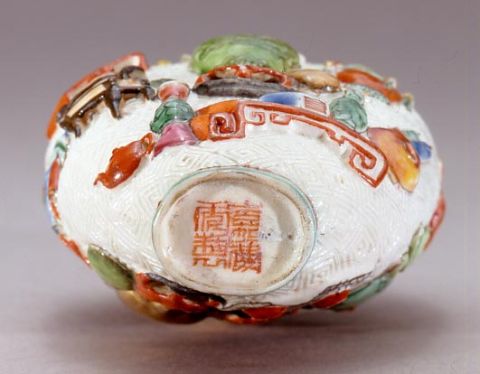


Bottle ID: 436
MOLDED ENAMELED, FAMILLE ROSE OBJECTS, SCHOLARLY
Date: 1796-1820
Height: 69 mm
Porcelain with famille-rose enamels; of flattened ovoid form, with an everted mouth and recessed oval foot; molded in relief with a series of auspicious and scholarly objects; including a vase containing a ruyi scepter and a branch of blossoming prunus, from which a lantern hangs, another vase with a hat-feather, another vase with a spay of millet, and a branch of coral, another hanging lantern, a ding tripod vessel, a pair of interlocking rings, and various scholarly trappings such as a weiqi board and boxes for pieces, scrolls, a qin, water pot with ladle, fly-whisk, set of books, teapot and incense-tool vase, all set against a formalized ground of leiwen (‘thunder pattern’), the foot inscribed with a four character mark in iron-red enamel seal script, Jiaqing nianzhi (Made in the Jiaqing period).
Imperial, Jingde Zhen Imperial kilns.
Similar Examples:
The Palace Museum, Beijing, Masterpieces of Snuff Bottles in the Palace Museum, p. 167, no. 170, (also illustrated in Zhu Peichu and Xia Gengqi, Biyanhu shihua, second edition, 1991, front cover).
Moss Hugh. Chinese Snuff Bottles, No. 5, p. 50, fig. 14.
Sotheby's, New York, September 14, 2010, lot 26, The Joe Grimberg Collection.
Provenance:
Hugh Moss (HK) Ltd.
The symbolism represented here is abundant and includes wish-fulfillment (the ruyi scepter), the qualities of a gentleman (the prunus), an official career (the hat feather) and its ensuing success (the ding tripod), longevity (coral branch), and the four accomplishments of the scholar (weiqi board, scrolls, books and the qin). This is one of several similar molds for this symbolic design all from the Jiaqing period, and represents the art of molding porcelain snuff bottles at its best at that time.
< Back to full list
 English
English 中文
中文